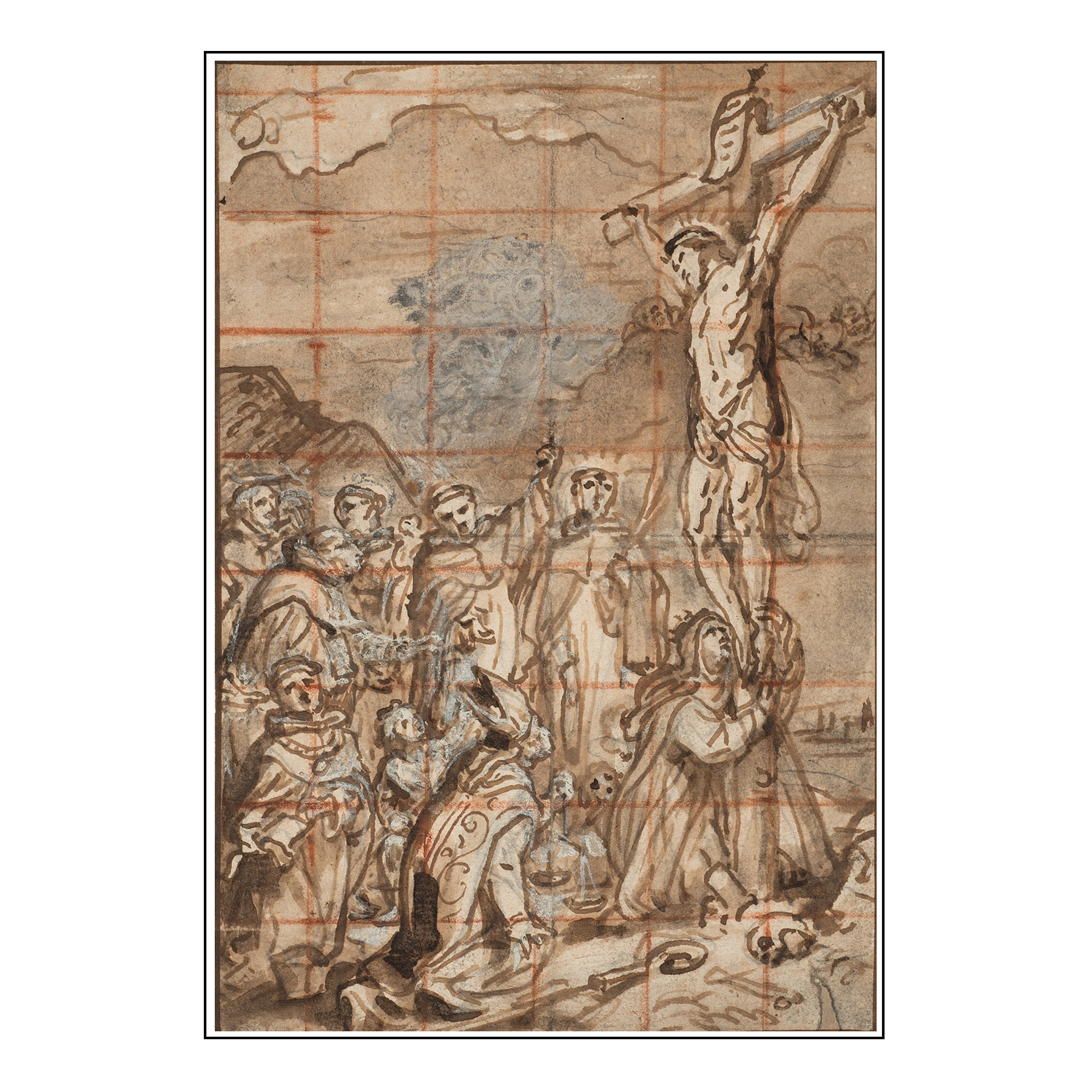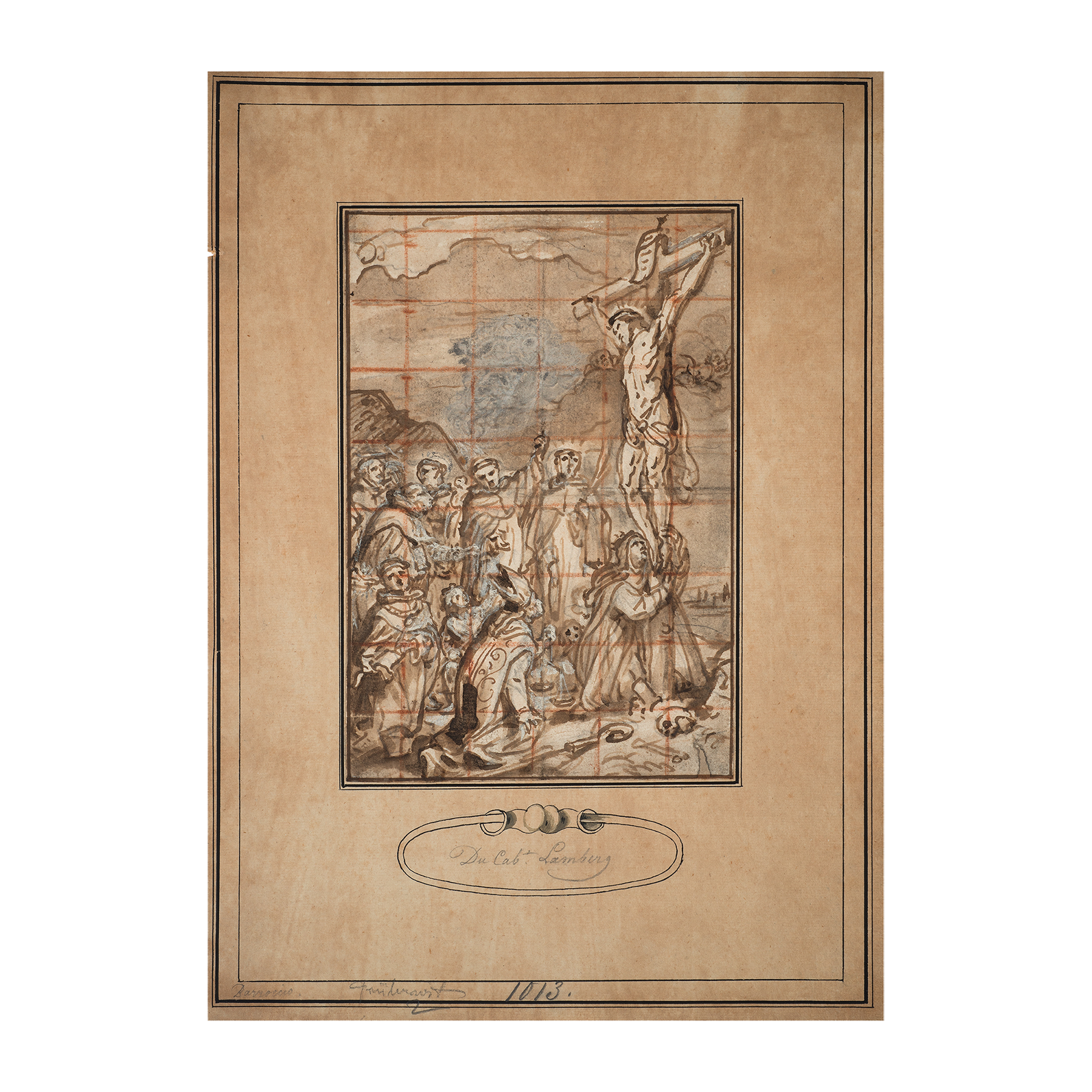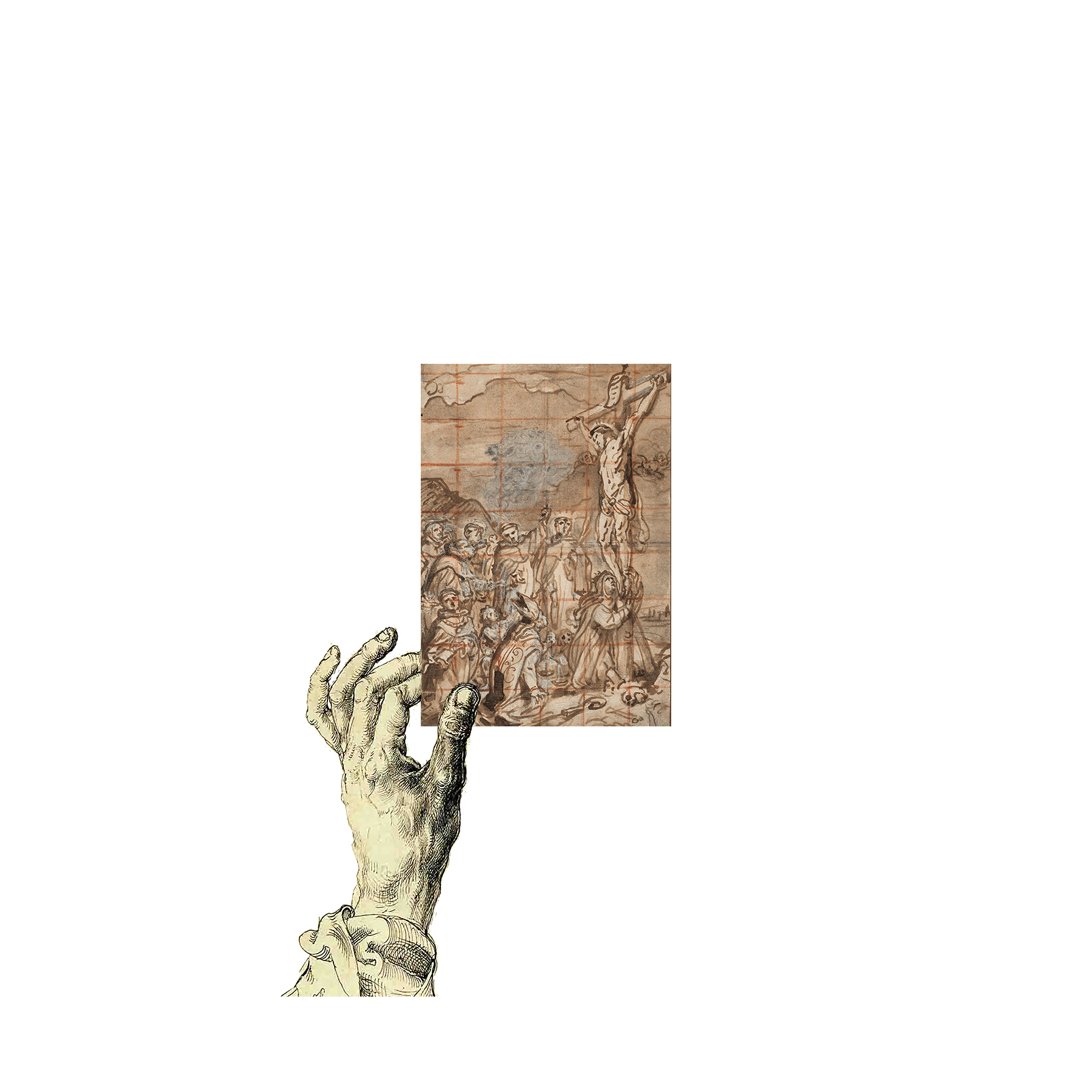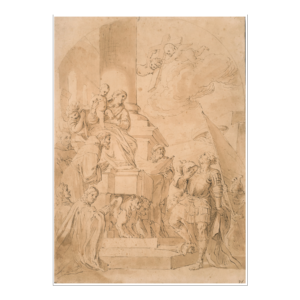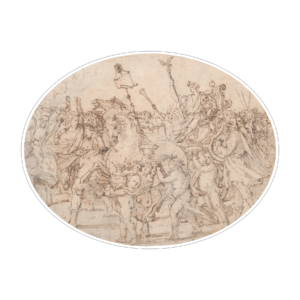Abraham van Diepenbeeck
Bois-le-Duc, 1596 – Anvers, 1675
Christ on the cross surrounded by Dominican saint in adoration
Black chalk, pen and brown ink, brown wash, heightened with white gouache. Squared with red chalk. Framing lines in pen and brown ink. Inscribed in a cartouche on the ancient mount: Du Cabt Lamberg.
212 x 144 mm – 6 3/8 x 5 11/16 in.
Provenance : Josef Carl von Klinkosch, his mark, verso of mount, lower left corner (L. 577; not in his sale, on 15 April 1889 in Vienna).
After training as a glass painter with his father Jan Roelofsz van Diepenbeeck, Abraham left his native town of Bois-le-Duc to settle in Anvers where he became a member of the St Luc guild in 1622-1623. He executed stained glass for Anvers churches and monasteries such as the collegial St. Jacobus and the Dominican church of St Paul, and finally joined Peter Paul Rubens’ studio. In 1626-1627, he participated in the execution of cartoons for The Triumph of the Eucharist, a set of tapestries commissioned by infant Isabela to Rubens’s studio. Diepenbeeck designed mythological and biblical representations for tapestry cartoons and mostly specialized in engraving as from the 1650’s. His graphic corpus contains numerous preparatory studies of illustration projects for books, frontispieces, portraits, objects. About 500 engravings made after his designs are known.
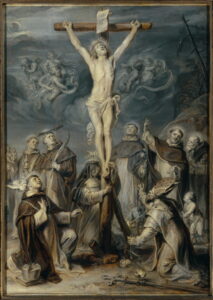

This study is a first thought for Christ on the cross surrounded by Dominican saint in adoration[1], a preparatory modello in grisaille for the print[2] in reverse, dedicated circa 1640-1660 to Monseigneur Capello by Adriaen Lommelin[3] (Amiens circa 1616 – Anvers after 1673). Abraham van Diepenbeeck squared the composition in red chalk – a technique which is often observed on his drawing – in order to transfer the composition on a larger scale.
According to the inscription on the mount Du Cabt Lamberg, this drawing could have belonged to Count Anton Franz de Paula Graf Lamberg-Sprinzenstein (1740-1822). This Austrian diplomat was one of the most important collectors in Vienna at the end of the 18th century, notably famous for his remarkable collection of Greek vases[4]. In 1807, he became an honor member of the Academy of Fine Arts in Vienna. His collections, bequeathed to this institution in 1818, still forms the main chore of the Academy’s paintings collection.
Condition report: the sheet is fully glued onto an old mount. Good overall condition. A small lack of paper at the bottom right (visible on the photograph). Gouache slightly oxidized in the landscape. The wash and the red chalk (squaring) in good condition. Perfectly legible drawing.
[1] Oil on wood, Louvre Museum, Paris (RF 2001.2).
[2] Rijksmuseum, Amsterdam (RP. P. OB. 67.830).
[3] An engraver active in Anvers from the 1640s and working after P. P. Rubens and A. Van Dyck.
[4] Alexandre de Laborde, Collection de vases grecs de Mr. le comte de Lamberg, expliqué et publié par Alexandre de Laborde, Paris, Imprimerie Didot, 2 tomes, 1813-1824.
